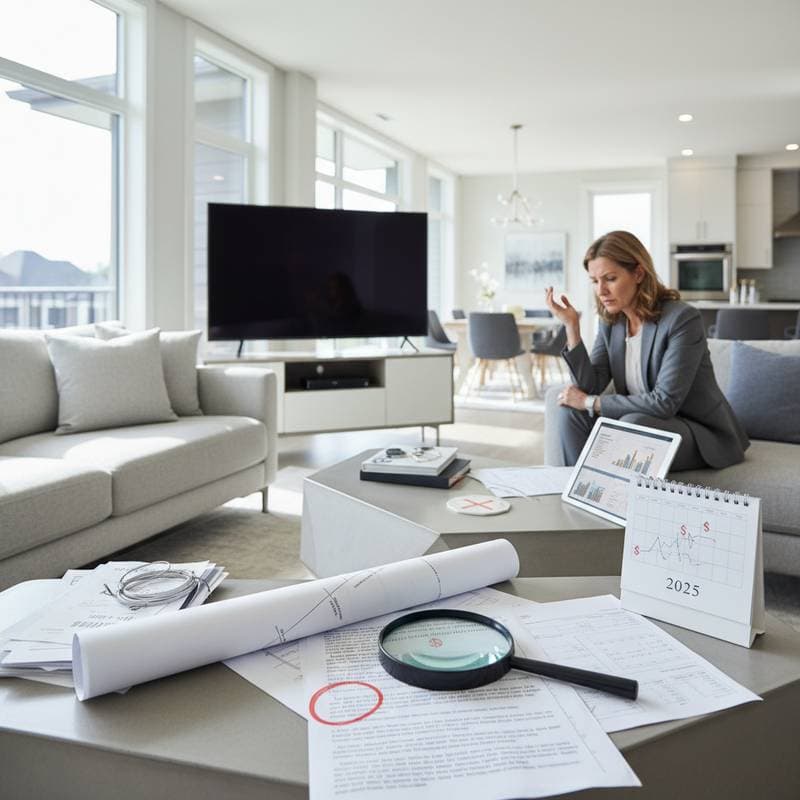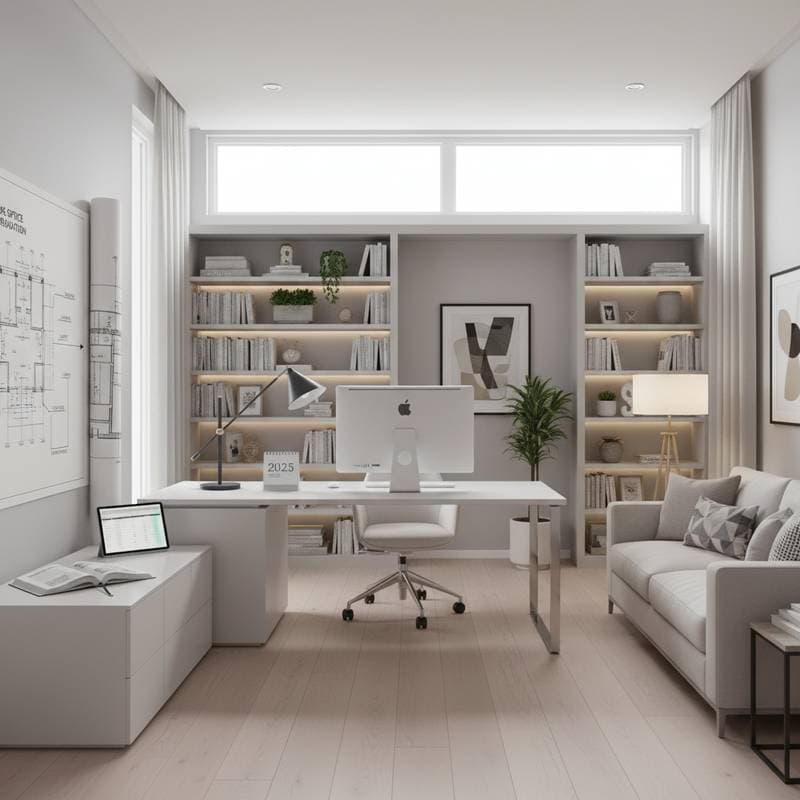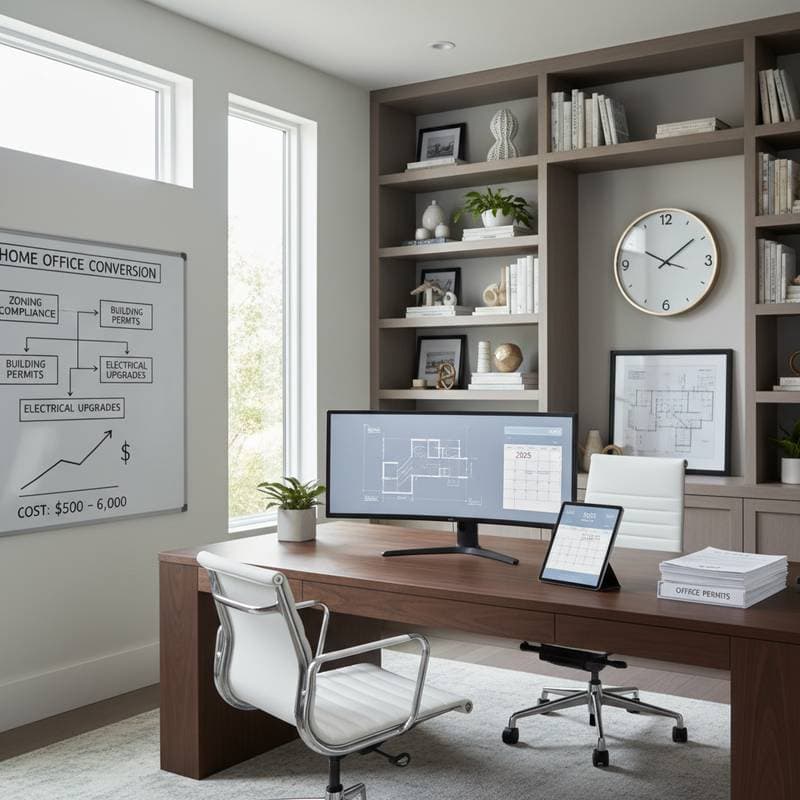Full 2025 Cost Breakdown for Soundproofing Your Home Office
Quick Overview
Soundproofing a home office requires less investment than a full remodel. The average cost ranges from $800 to $4,000 for comprehensive room treatment. Focus on combining seals, insulation, and acoustic surfaces for optimal results.
Understanding Soundproofing
Soundproofing minimizes the transmission of sound into or out of a workspace. Materials block or absorb noise to support uninterrupted phone calls, meetings, and concentrated tasks. Effective solutions address airborne sounds, such as voices or music, as well as structure-borne vibrations, like footsteps.
Benefits and Drawbacks
Benefits
- Enhanced privacy during calls and recordings
- Improved comfort and concentration levels
- Potential increase in home resale value, particularly for dedicated offices or studios
- Fewer disturbances from shared walls with neighbors
Drawbacks
- Elevated expenses for complete structural isolation
- Certain materials may encroach on room space
- Improper installation risks moisture buildup or violations of building codes
- Modifications often require inspections for ventilation and electrical systems
Ideal Scenarios and Potential Limitations
Consider soundproofing when:
- Walls adjoin noisy neighbors or high-traffic household areas.
- Audio recording or regular calls demand quiet conditions.
- HVAC or plumbing sounds penetrate thin walls.
- External noises from traffic or yards hinder productivity.
Soundproofing may underperform when:
- Reliance falls solely on soft furnishings without structural enhancements.
- Gaps around vents or edges remain unsealed.
- Inadequate moisture management leads to damp insulation.
- Expectations include absolute silence rather than significant noise reduction.
Step-by-Step Guide to Soundproofing a Home Office
Required Tools and Materials
- Acoustic caulk
- Weatherstripping tape
- Door sweep
- Mass loaded vinyl (MLV)
- Acoustic panels or foam
- Mineral wool or fiberglass insulation
- Screw gun, utility knife, safety glasses, gloves
Estimated Time: 1 to 3 days, based on room dimensions
Skill Level: Moderate
Step 1: Preparation and Inspection
Examine doors, windows, and outlets for air leaks, as sound passes through these openings. Use painter's tape to mark each identified gap for targeted treatment.
Step 2: Sealing Air Gaps
Apply acoustic caulk to baseboards, outlets, and ceiling joints. Install weatherstripping on door frames and windows, then add a door sweep to seal the bottom edge.
Step 3: Enhancing Wall Mass
Secure MLV sheets behind drywall or directly to walls. Measure and cut panels to fit, then fasten them to studs with screws. Overlap seams and seal with specialized acoustic tape.
Step 4: Improving Insulation
Access wall cavities if possible and insert mineral wool or fiberglass batts. These dense options outperform standard insulation in absorbing airborne sounds.
Step 5: Addressing the Ceiling
Attach MLV between joists or suspend acoustic tiles. For substantial footfall noise from above, install resilient channels to separate ceiling drywall from the structural frame.
Step 6: Managing Floor Noise
Place dense underlayment under carpets or floating floors. Options like rubber mats or cork effectively dampen vibrations and impacts.
Step 7: Installing Acoustic Panels
Position foam or fabric-covered panels on sound-reflective walls. Arrange them at ear height with even spacing to maximize absorption, using adhesive strips or clips for mounting.
Step 8: Testing Effectiveness
Shut the door and introduce sound from outside the room. Identify remaining leaks by listening closely, then apply additional sealant or panels as needed.
Step 9: Cleanup and Disposal
Transport old insulation to an approved waste facility. Recycle packaging materials like cardboard and foam, and vacuum away dust to ensure clean surfaces for adhesives.
Expert Advice: Shared HVAC ducts often serve as noise pathways. Line them with acoustic insulation or add a duct silencer for improved results.
Cost Analysis
Standard Range: $800 to $4,000 for a full home office setup
Elements That Increase Expenses:
- Larger rooms or taller ceilings requiring more materials
- Additional drywall layers or extensive MLV coverage
- Bespoke acoustic panels tailored to specific designs
- Decoupling systems for ceilings or structural modifications
- Professional labor, including necessary permits
Elements That Reduce Expenses:
- Treatment limited to smaller areas or single walls
- Self-performed labor to avoid contractor fees
- Off-the-shelf foam panels over custom fabric options
- Incorporation of existing rugs or curtains for absorption
Strategic Timing for Upgrades: Integrate MLV or insulation during ongoing wiring or renovation projects when walls are exposed. This approach proves more cost-effective than retrofitting completed surfaces.
| Material or Feature | Typical Installed Cost | Noise Reduction Level |
|---|---|---|
| Acoustic panels | $10 to $25 per square foot | High absorption |
| MLV barrier | $2 to $5 per square foot | Strong blocking |
| Door and window seals | $50 to $200 total | Excellent value |
| Resilient channels | $1 to $3 per linear foot | Optimal for ceilings |
| Insulation upgrade | $1.50 to $3 per square foot | Moderate enhancement |
| Complete professional installation | $3,000 to $6,000 | Studio-quality performance |
DIY Approach Versus Professional Services
DIY Suits Projects When:
- Precise measuring, cutting, and mounting of panels occur without errors.
- Basic drywall repairs fall within your skill set.
- Electrical outlets and lighting fixtures remain undisturbed.
Engage Professionals For:
- Relocation of wiring, HVAC, or plumbing elements.
- Compliance with building codes related to ventilation or fire safety.
- Comprehensive isolation involving double walls or floating floorsystems.
Professional Advantages: Certified specialists measure decibel levels and customize layers for specific surfaces. They manage permits, select fire-rated materials, and install specialized doors, often backed by warranties or performance assurances.
Ongoing Maintenance and Preventive Measures
Recommended Schedule: Annual checks or following significant weather events
Key Tasks:
- Examine door and window seals; replace any deteriorated weatherstripping.
- Secure loose panels or ceiling tiles by tightening fixtures.
- Vacuum acoustic foam to remove dust and preserve absorption qualities.
- Monitor for emerging noise paths after household repairs or relocations.
Expected Results: Regular upkeep sustains peak soundproofing efficiency and averts minor problems from escalating into major overhauls.
Alternative Solutions
1. White Noise Generators
Ideal for covering light ambient sounds without invasive work. Prices span $30 to $200, making them suitable for apartments or temporary setups.
2. Noise-Canceling Headphones
Perfect for individuals seeking personal isolation without altering the environment. Models cost $100 to $400 and demand no structural changes.
3. Portable Vocal Booths
Recommended for podcasters or video callers needing voice isolation. Pre-assembled units range from $1,000 to $3,000 but occupy desk space.



